
The Sagrada Familia, a stunning basilica in Barcelona, stands as a testament to the genius of architect Antoni Gaudí. With its intricate designs and towering spires, this iconic landmark draws millions of visitors each year, eager to marvel at its unique beauty and fascinating history.
In this article, we will explore **The Fascinating Facts You Need to Know About La Sagrada Familia in Barcelona**, delving into its architectural significance, the ongoing construction, and the cultural impact it has had on the city and beyond. Prepare to be captivated by the stories that make this masterpiece truly extraordinary.
The Architectural Marvels of La Sagrada Familia: A Deep Dive
The architectural marvels of La Sagrada Familia are a brilliant blend of nature-inspired designs and religious symbolism. Gaudí's vision was to create a *living temple*, where every detail reflects the flora and fauna of the natural world. The basilica features intricate facades representing the Nativity, Passion, and Glory, each conveying profound spiritual narratives through its intricate sculptures and forms.
One of the most *remarkable aspects* of La Sagrada Familia is its use of **light**. The stained glass windows, designed to bathe the interiors in vibrant colors, create a dynamic atmosphere that changes throughout the day. The clever placement of windows allows for a play of light that enhances the spiritual experience, making visitors feel as if they are in a different world. The following elements contribute to this effect:
- Color Gradation: Each color represents a different aspect of spirituality.
- Glass Design: Patterns inspired by nature that allow light to filter in uniquely.
- Height of Windows: Strategically placed to maximize natural light.
The structural innovations of La Sagrada Familia also deserve attention. Gaudí employed a variety of techniques such as **hyperboloid structures** and **catenary arches**, allowing for both strength and artistic fluidity. These engineering feats not only ensure the longevity of the basilica but also create an awe-inspiring visual experience. In fact, La Sagrada Familia is an architectural study in the use of **geometry** and **organic forms**, showcasing Gaudí's unique approach to building design.
Exploring the Iconic Symbols and Their Meanings in La Sagrada Familia
La Sagrada Familia is not only an architectural wonder but also a rich tapestry of symbols that convey deep meanings. Each element in its design is intentional, reflecting Gaudí's vision of a divine narrative. For instance, the three grand facades—the Nativity, Passion, and Glory—represent the life of Jesus Christ, with each facade symbolizing different phases of his journey. This approach allows visitors to engage with the spiritual storyline in a profound way.
Among the many iconic symbols found within the basilica, several stand out for their significance:
- The Tree of Life: This motif appears throughout the structure, symbolizing growth and renewal.
- The Shell: A representation of pilgrimage, often associated with the journey of life.
- Flower Petals: Decorate the columns, symbolizing the beauty of creation and divine presence.
Furthermore, the use of geometry in the design enhances the symbolic meanings embedded within the structure. Gaudí incorporated the Fibonacci sequence to create a harmonious relationship between nature and architecture, which reiterates the connection between humanity and the divine. This meticulous attention to detail not only showcases artistic brilliance but also invites onlookers to ponder their place within the larger tapestry of existence.
Finally, the towers of La Sagrada Familia, each dedicated to a significant figure in Christianity, serve as a profound reminder of faith and spirituality. The tallest tower, dedicated to Jesus Christ, will stand at an impressive height of 172.5 meters, symbolizing the aspiration to reach towards the heavens. This layering of symbols contributes to the basilica's overall narrative, making it a true reflection of Gaudí's belief in the gospel and nature as one.
The History Behind La Sagrada Familia: From Vision to Reality
The history of La Sagrada Familia is as captivating as its architectural design. The vision for this monumental basilica began with architect Francisco de Paula del Villar in 1882, but it was soon taken over by Antoni Gaudí, whose innovative ideas transformed the original plans. Gaudí devoted over 40 years of his life to this project, breathing his unique style and philosophy into every stone and detail, making it not just a church but a representation of his spiritual beliefs.
As construction progressed, Gaudí faced numerous challenges, including funding and political turmoil. However, his unwavering commitment to the project allowed his vision to evolve, incorporating elements of **modernisme** and his deep respect for nature. Tragically, after Gaudí's death in 1926, the basilica faced significant delays, with construction continuing intermittently over the decades. Today, it stands as a symbol of resilience and artistic ambition.
Key milestones in the history of La Sagrada Familia include:
- 1882: Groundbreaking for the basilica.
- 1883: Gaudí becomes the chief architect.
- 1926: Gaudí's death halts construction.
- 2026: Expected completion, marking the centenary of Gaudí’s passing.
Despite its ongoing construction, La Sagrada Familia has been recognized as a UNESCO World Heritage Site, a testament to its architectural significance. The blending of Gothic and Art Nouveau styles, along with its intricate facades and towering spires, has made it one of the most visited monuments in Spain. This enduring project illustrates the intersection of vision and reality, reflecting Gaudí's belief that true beauty and spirituality can only be realized through perseverance and creativity.
Why La Sagrada Familia is a UNESCO World Heritage Site
La Sagrada Familia was designated a UNESCO World Heritage Site in 2005 due to its exceptional architectural qualities and cultural significance. The basilica embodies the innovative genius of Antoni Gaudí, whose work has redefined the boundaries of architecture. Its unique fusion of Gothic and Art Nouveau styles showcases an intricate design that is both visually stunning and deeply symbolic, illustrating Gaudí's philosophy of incorporating nature and spirituality into his work.
Moreover, UNESCO recognized La Sagrada Familia for its contribution to the cultural landscape of Barcelona. The basilica is seen as a *living monument*, continually evolving and inspiring future generations. This ongoing construction illustrates a commitment to Gaudí's original vision while integrating modern techniques and materials, making it a dynamic representation of artistic evolution. Key reasons for its UNESCO designation include:
- Innovative Design: Gaudí's original concepts challenge conventional architectural norms.
- Cultural Impact: The basilica has become a symbol of Barcelona, attracting millions of visitors annually.
- Historical Significance: Represents over a century of artistic dedication and perseverance in construction.
In addition, the intricate symbolism found throughout La Sagrada Familia enhances its status as a UNESCO World Heritage Site. Each element of the basilica's design serves a purpose, from the towering spires representing religious figures to the detailed facades that tell the story of Christianity. This thoughtful integration of meaning and artistry is a testament to the profound impact Gaudí aimed to achieve, making La Sagrada Familia not just a building, but a spiritual and cultural experience for all who visit.
The Unique Design Elements of La Sagrada Familia Explained
The unique design elements of La Sagrada Familia reflect Antoni Gaudí's visionary approach, where every feature is meticulously crafted to embody spiritual significance. One particularly striking aspect is the integration of natural forms into the architectural structure. Gaudí drew inspiration from the shapes and patterns found in nature, allowing columns to resemble tree trunks and branches, which not only supports the basilica's weight but also creates a serene, organic ambiance. This connection to nature reinforces the idea of the basilica as a living temple.
Another remarkable element is the use of light and shadow throughout the interior. Gaudí designed the basilica to interact dynamically with sunlight, creating an ethereal atmosphere. The stained glass windows, featuring a spectrum of colors, not only illuminate the space but also symbolize different spiritual messages. The interplay of light in the basilica evolves with the time of day, enhancing the emotional and spiritual experience of visitors as they move through the space.
The geometry and structural engineering of La Sagrada Familia further set it apart as an architectural marvel. Gaudí utilized advanced techniques such as hyperbolic paraboloids and catenary curves to achieve both aesthetic beauty and immense stability. This innovative approach allows for the creation of intricate designs that are not only visually stunning but also structurally sound, showcasing a perfect harmony between art and science. Each element is thoughtfully designed to contribute to the overall vision of the basilica.
Finally, the sacred symbolism embedded within the design elements enriches the experience for visitors. From the towers dedicated to significant figures in Christianity to the intricate carvings depicting biblical stories, every aspect of La Sagrada Familia serves to tell a story. Gaudí's genius lies in his ability to weave these symbols into the fabric of the structure, creating a profound spiritual narrative that resonates with individuals from all walks of life, inviting them to reflect on their own beliefs and connections to the divine.
Visiting La Sagrada Familia: Tips for an Unforgettable Experience
When visiting La Sagrada Familia, planning ahead can greatly enhance your experience. Consider purchasing your tickets online in advance to avoid long queues, especially during peak tourist seasons. This not only saves time but also guarantees your entry to this magnificent basilica, which draws millions of visitors each year. Additionally, try to visit during the early morning or late afternoon to enjoy a quieter atmosphere.
To fully appreciate the intricate details of La Sagrada Familia, consider joining a guided tour. Knowledgeable guides can provide fascinating insights into Gaudí's vision and the meaning behind various architectural elements. Furthermore, audio guides are available for those who prefer to explore at their own pace while still gaining valuable context about what they are seeing. Important elements to focus on during your visit include:
- The Nativity Facade: A celebration of life and creation.
- The Passion Facade: A stark contrast highlighting suffering and sacrifice.
- The Glory Facade: Representing divine glory and the resurrection.
Don't forget to take some time to admire the basilica's stunning interiors as well. The play of light through the colorful stained glass windows creates a mesmerizing atmosphere that changes with the time of day. Make sure to pause and reflect in the tranquil spaces, allowing yourself to absorb the spiritual ambiance of this unique architectural masterpiece. For a more immersive experience, consider visiting during a religious service or special event, where you can witness La Sagrada Familia in its full glory.
Lastly, remember to respect the sacred nature of this site. Keep noise levels low and dress appropriately, as La Sagrada Familia is not only a tourist attraction but also a working church. By being mindful of your behavior and surroundings, you contribute to maintaining the peaceful environment that Gaudí envisioned for this extraordinary place. Your respectful attitude will enrich your experience and that of fellow visitors, allowing everyone to connect with the spirit of La Sagrada Familia.
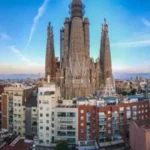 Unveiling the Beauty: The Sagrada Familia in Barcelona - A Finished Masterpiece
Unveiling the Beauty: The Sagrada Familia in Barcelona - A Finished Masterpiece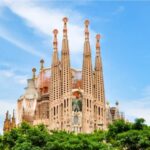 The Extravagant Beauty of Sagrada Familia in Barcelona: Essential Information
The Extravagant Beauty of Sagrada Familia in Barcelona: Essential Information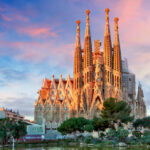 The Completed Sagrada Familia: Immersive Beauty Unveiled
The Completed Sagrada Familia: Immersive Beauty UnveiledIf you want to know other articles similar to The Fascinating Facts You Need to Know About La Sagrada Familia in Barcelona you can visit the category WHERE YOU CAN GO.
Leave a Reply

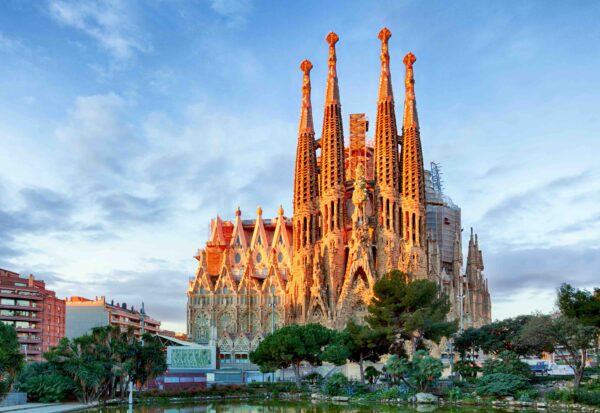
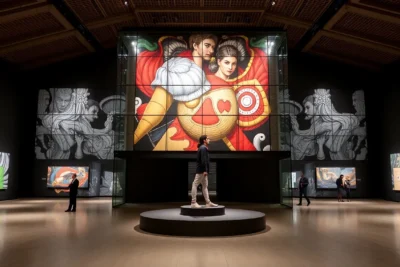
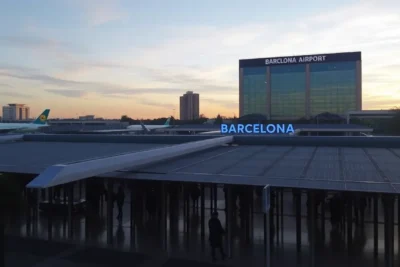

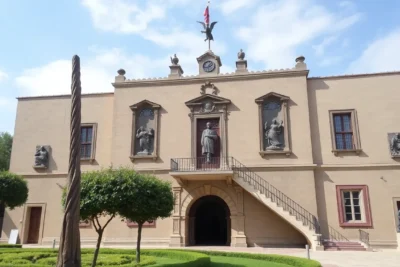

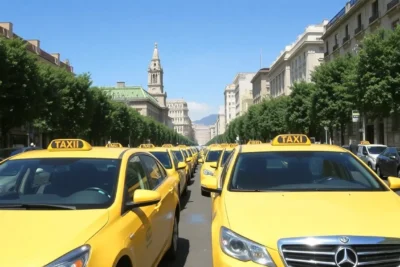
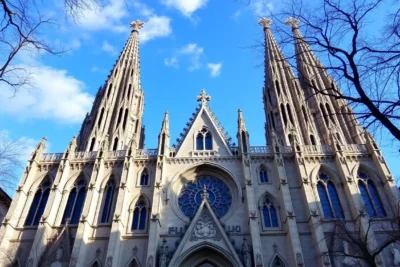

Read more!